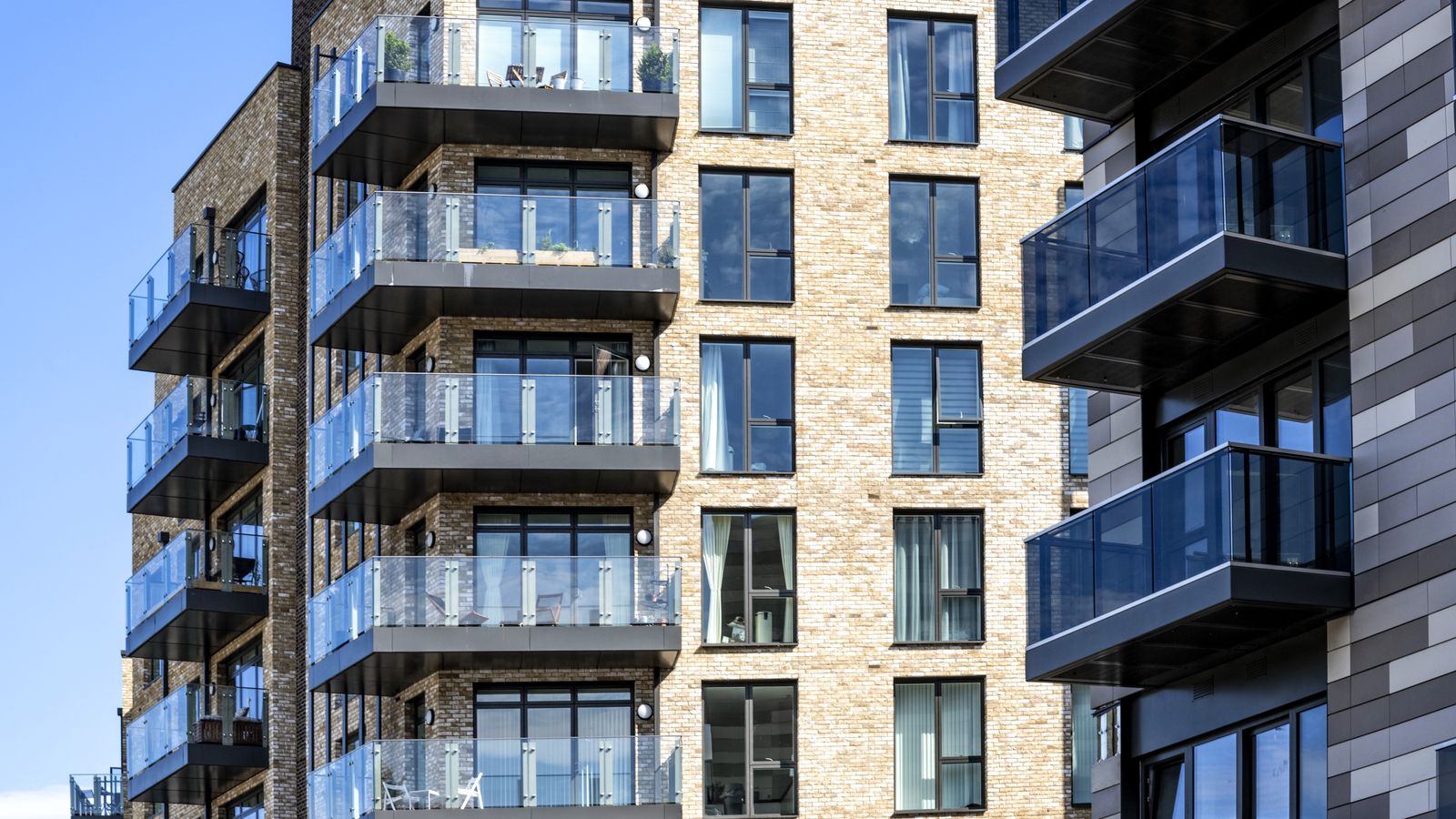As interest rates have climbed a ladder that may pass 5% this week, public and policy attention has focused on the impact on mortgage holders.
It’s easy to understand why.
Borrowers who fixed rates two years ago at a small premium above zero are now shopping for loans at 6%, an acute and potentially ruinous increase. And homeowners tend to vote, guaranteeing attention.
But that attention belies the fact mortgage holders are now in the minority.
Click to subscribe to the Sky News Daily wherever you get your podcasts
As revealed in analysis by Sky News today, renters now comfortably outnumber those who own their home outright, with even fewer paying off a home loan, a reversal of the situation a generation ago.
The crossover between mortgage holders and renters came as far back as 2011 reflecting a generational shift accelerated by the financial crisis.
Government ‘unable to spend’ £1.9bn allocated to tackle housing crisis
Awaab Ishak: Toddler’s death from mould triggers review of landlord guidance
House prices: Growth slows with higher mortgage rates especially impacting more expensive areas
As baby boomers and Generation X have paid off their mortgages, house prices have increased beyond the reach of their children, meaning fewer new mortgage holders in the market.
Instead, more people have been forced to rent, fuelling further demand and pushing prices higher, harming renters’ prospects of saving a deposit for their own home.
And as rates have risen, genuine pressure on landlords to increase prices has increased.
As a consequence, housing insecurity is becoming mainstream.
Please use Chrome browser for a more accessible video player
Housing insecurity becoming mainstream
Tenants are more likely to be young – 65% of renters are aged 16-34, a mirror of the 71% of outright owners who are over-65 – and, as Sky News analysis shows today, renters are more vulnerable to increases in the cost of housing.
In the year to June tenants have seen rents increase 5.1%.
In the same period the number of properties available to rent has declined by 19%, according to the Propertymark housing insights report.
Meanwhile the mismatch between supply and demand has grown by 57%.
Charity Shelter estimates that almost one in three tenant households spend more than half their income on rent, and more than 2.5 million are in arrears or consistently struggling to pay their rent, an increase of 45% since April last year.
The use of Section 21 orders, so-called no-fault evictions, where landlords do not have to give a reason to evict tenants even if they have paid the rent, has soared too, to more than 6,000 a quarter.
Please use Chrome browser for a more accessible video player
A symptom of a wider housing crisis
That leaves renting households facing profound insecurity and local authorities even more pressure for limited social housing stock.
This squeeze on renters is just one symptom of Britain’s wider housing crisis, which at its heart is a problem of insufficient supply and spiralling affordability.
In 1997 the median house cost three-and-a-half times the median gross income.
By last year it had increased to 8.3 times, with vastly higher leaps in London and the south-east, where the overheated market accounts for around half of all new mortgage business.
Be the first to get Breaking News
Install the Sky News app for free
That upwards pressure has dragged rents up too, with the median UK monthly rent now £825.
Yet while action to support mortgage holders has been overt, with bank bosses hauled into Downing Street to agree support measures with the chancellor, support for renters has been less obvious.
It is more than a year since the government published a white paper on the private rental sector and while the Renters Reform bill has been introduced to parliament, its passage has not been scheduled.
That leaves tenants knowing that even if they can pay their rent there’s no guarantee their house will remain their home.






















